The need to lengthen a dress or skirt can arise for a variety of reasons. - shrinkage of fabric after washing, weight gain, when the item has become too short, due to haste when choosing clothes and buying an item that does not fit your figure. There are many ideas and ways to lengthen a dress.
In what cases is it worth lengthening a dress?
The need to lengthen a dress may be due to:
- an incorrectly selected washing mode, as a result of which the item shrinks and becomes shorter;
- hasty purchase of a dress when there was too little time to try it on or the item was purchased without trying it on at all;

- poor quality fabric composition, when an item is washed according to all the rules, but it still shrinks and as a result the length of the item becomes shorter;
- some inappropriateness when the style and model of a dress is suitable, for example, for work in the office, but the length is not;
- the desire to change the model a little, when it seems that adding length will make the dress more interesting and brighter;
- the desire to hide some defect, for example, when a dress is torn at the bottom or dirty, so that it cannot be washed out, and as a result it had to be cut a little or put on a fabric patch and then extended with another fabric.
Lengthening is usually resorted to in cases where the style of the dress itself is liked, and the woman or girl would really like to wear it, adding a little length.
Ways to Add Length, Step by Step Instructions
You can lengthen a dress (there are many ideas, which will be discussed in detail later in the article) in a variety of ways. Many people believe that you can lengthen a dress only in one way - by sewing a piece of fabric to the hem in the form of a flounce or frill. However, in fact, you can add a few centimeters to the length of a dress not only in this way, which is undoubtedly the most popular, but not the only one.

| Method of lengthening a dress | Note |
| With the help of flounces and frills, fabric strips, openwork lace | The simplest and most popular way. You can use fabric of the same texture as the dress, or you can take materials that contrast in color and texture. |
| Due to the lengthening in the middle and the addition of fabric inserts in the waist area | You can add either identical material or a completely different one, combining it with a stripe on the hem. |
| By adding inserts to the hem of the dress | To do this, the bottom of the dress is cut off and the resulting strip is sewn to the main product using another piece of fabric (usually lace). |
| By lengthening the top of the dress (bodice) | Suitable for models such as sheath and pencil dresses. |
| By using cape elements (tulle skirt) | Basically, this option is suitable for outfits that are worn to various events and celebrations. |
| By creating a trail | |
| By adding a second underskirt (layered version) | Such a skirt can either be a full-fledged petticoat, or simply be a strip sewn onto the lining fabric and peeking out from under the bottom of the dress. |
Using lace or flounce
The simplest and most popular way to add length to a dress hem is to extend it with a strip of fabric or lace. To make the garment look harmonious, it is better to choose the same material as the one the dress is made of. However, this is not a mandatory rule, since a garment extended in this way can look quite decent if another selected fabric matches the main material of the garment.
For example, skirts and dresses made of denim, edged with a strip of lace at the bottom, look very good. A contrasting strip sewn to the hem of a dress will also look advantageous, but a material that is slightly different in texture or color will make the dress look cheaper.
To lengthen a dress in this way you should:
- Decide on the type of fabric, length and width of the strip that will be sewn to the bottom of the dress. If you plan to make a frill (flounce), then you need to take 1.5-2 times more material in length, depending on how lush and multi-layered the added edging will be. When cutting out the strip, you should add 1-1.5 cm for the allowance.
- You can sew a flounce or frill either on the front side (in this case the seam will be on the outside) or on the inside. Before sewing the element to the main part, you must first baste the 2 parts by hand. This will allow you to see the flaws and correct them.
- After the flounce or strip of fabric is sewn to the bottom of the garment, the hem and added material are ironed well to give the garment a finished and presentable appearance.
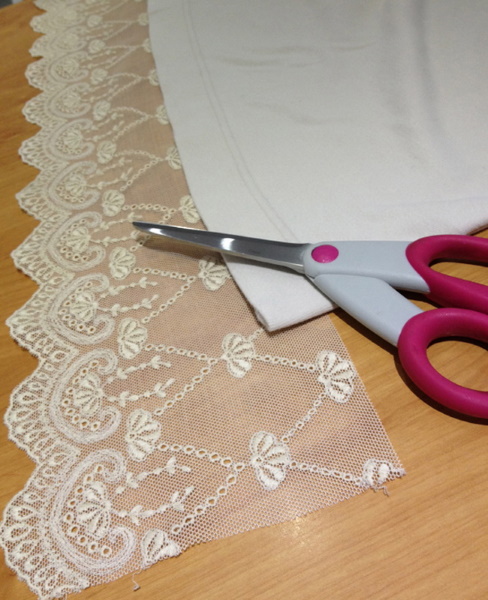
To make the dress look better, you can additionally sew the same strips of fabric onto the collar or cuffs. It should be taken into account that a lush frill is more suitable for straight-cut dresses, and on items with lush skirts, simple fabric strips sewn along the bottom of the hem will look better.
To lengthen linen dresses, it is worth choosing a different material, since linen loses its shape and lush frills made of this type of fabric can change shape after washing and look unattractive.
Inserts on the hem
You can also lengthen a dress (there are many ideas, described further in the article) using inserts on the hem. In this case, some part of the bottom of the dress (5-10 cm) is cut off and then sewn back together with a fabric insert, which connects the resulting cut to the main part of the product. As a result, the dress looks very interesting and unusual and at the same time becomes longer.
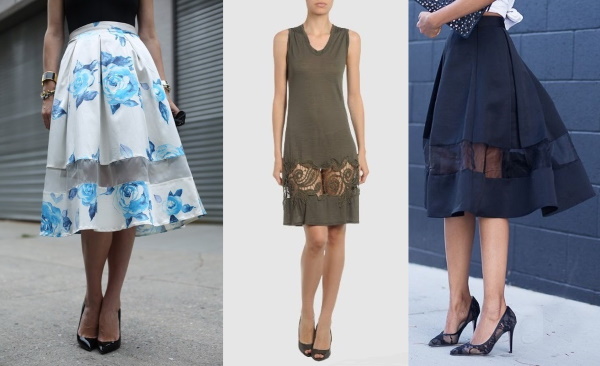
For the alteration you will need:
- scissors;
- fabric cut;
- needles for fixing fabric (tailor's pins);
- measuring tape;
- iron;
- sewing machine;
- threads and a simple needle (for preliminary basting of parts).
Step by step, everything is done like this:
- First, you need to decide on the type of fabric, then take all the measurements and cut the material appropriately. Such inserts look best if they are made of lace, but other options may also take place, the main thing is that the fabric is in harmony with the main material.
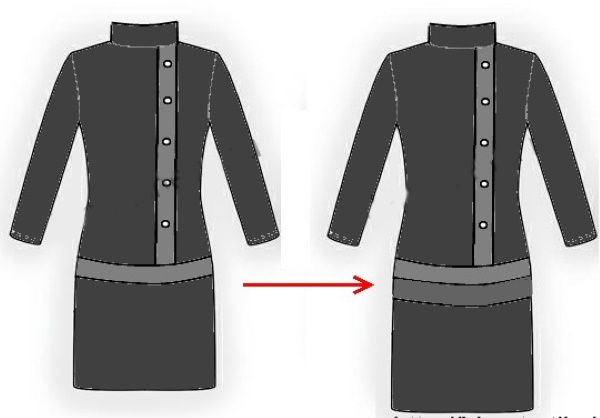
- Then you should carefully cut off the bottom of the dress, having determined in advance what this cut will be equal to in width in centimeters. You should not cut off too much or, on the contrary, too little fabric. The ideal option is when the cut strip and the additional one are equal in width and are from 5 to 10 cm. When cutting out, you should also remember to leave 0.5-1 cm of material for allowances on the sides and length.
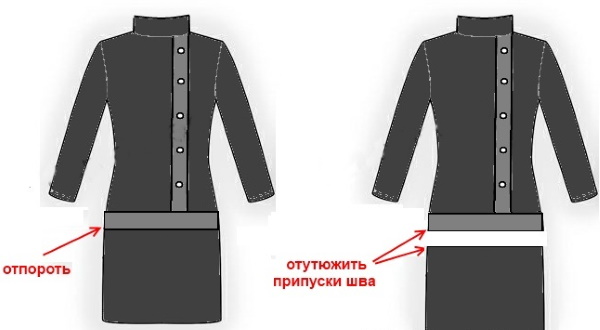
- Next, the cut line (both the dress and the added section) is processed with a zigzag stitch or overlock. If a lace ribbon was chosen for the extension, it is not overcast.
- The seams are folded and ironed, after which they are basted and the additional piece is sewn to the dress by hand. If the appearance of the product is satisfactory, then everything is sewn on a sewing machine.
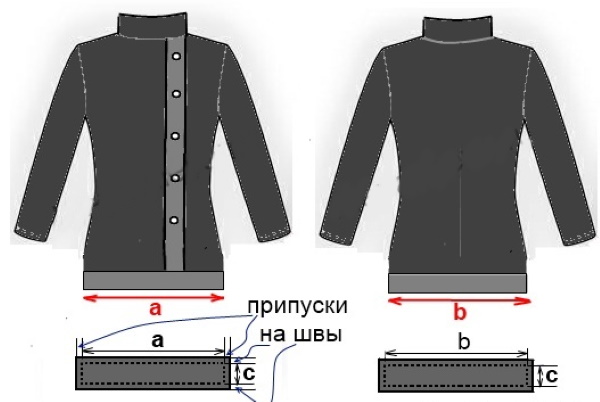
During the work, you should carefully monitor the symmetry, cut out and sew all the parts evenly from all sides, otherwise the unevenness will give away the independent alteration of the dress and spoil its appearance.
Lengthening at the waist
You can cut the dress to lengthen it not only at the bottom, but also at the waist. A fabric insert added in this area will help the product not only acquire a few extra centimeters in length, but will also make it more spectacular, elegant, and emphasize the graceful curve of the waist.
This method is not suitable for all dress models. It will be good for straight cut items, half-sun and sun dresses, but on wide trapeze dresses such an addition in the waist area will not be very appropriate.
In detail, the process of adding an insert looks something like this:
- The dress is cut along the seam in the waist area if it consists of 2 parts, or, if it is one-piece, simply cut along the waist line with scissors (in this case, the edges are processed with an overlock).
- The selected and cut strip of fabric is processed with an overlock on all sides and then stitched to the top and bottom of the dress, joining them together. This is done only after all the parts have been swept and it is made sure that everything looks perfect.
- Then the product is ironed and tried on.
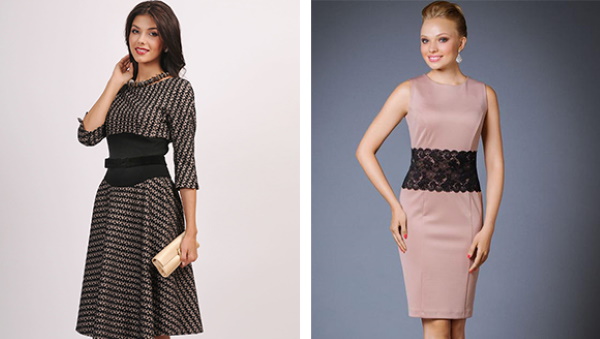
To make the dress look better, such an insert can be made not only in the waist area, but also add the same material at the bottom of the hem simply along the edge or also make an insert by cutting off part of the bottom and connecting it to the main product with a fabric strip. If it is not possible to find a similar fabric, then you can use a similar material, combining it with mesh, lace or guipure. This will add romanticism to the dress and help hide the differences.
Lengthening the bodice
You can lengthen a dress (ideas and the most successful ways of alteration are given further in the article) in another unusual way - by lengthening the top of the dress, namely its bodice. The only downside of this option is that it is not applicable to all models. This method is suitable if you need to alter a cocktail dress, a dress in the style of Marilyn Monroe, a corset-type dress, a sheath dress or a pencil dress.
Lengthening a dress by means of a bodice is similar to the previous method, however, in this case, the insert at the waist is made much wider and reaches the chest. The fabric is usually taken in a contrasting color, which allows you to emphasize the curves of the silhouette and emphasize the unusualness of the model.
The step-by-step reworking of the product looks like this:
- A piece of the required length and width is cut out of the fabric. It is usually made quite wide – 20-30 cm.
- The dress is cut or slit below the bust line.
- All edges are overcast - both the dress and the cut-out insert, and the dress parts are pre-sewn together by hand.
- Everything is ironed, after which the parts of the product are stitched using a machine stitch.
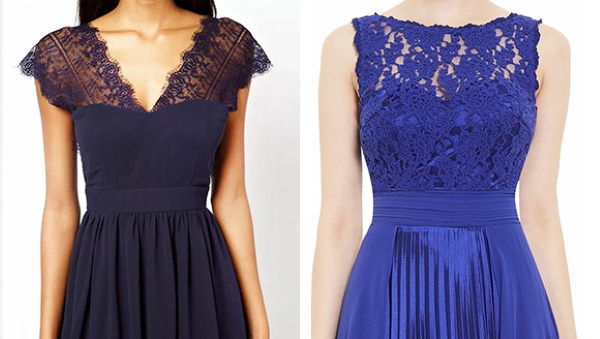
This insert is great for highlighting your bust and making your dress sexier and more attractive.
Creating a high waist
Creating a high waist also allows you to add length to the dress. The method visually resembles lengthening the bodice, but when lengthening the bodice, the dress is cut under the chest line, and when creating a high waist, a little lower. This alteration option is suitable for all dress models except flared ones. This style is great for hiding figure flaws and looking feminine at the same time.
Dresses are lengthened in the following way:
- From the selected piece of fabric, cut out a straight strip equal in length to the waist circumference (with a 1 cm allowance at both ends) and approximately 10-15 cm in width. You should not make the strip very wide, as this will lengthen not only the waistline, but also the bodice. The cut will have to be made not along the waistline, but under the chest.
- The dress is cut at the waist in the thinnest place. All edges of the fabric that need to be processed are overcast, folded and ironed.
- As in the previous 2 methods, all elements of the dress are sewn together, after which the product is ironed.
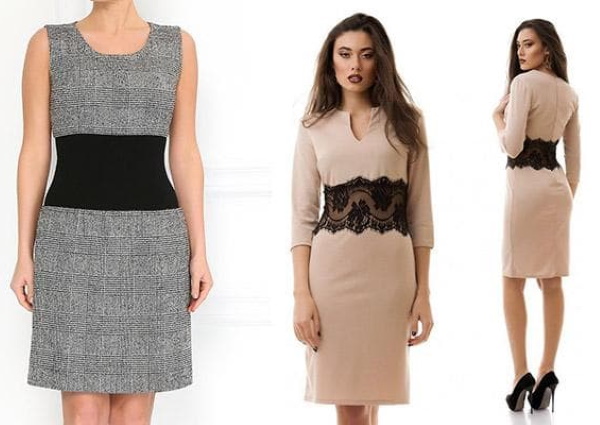
As a result, the dress takes on a completely different, but very attractive look, and becomes longer.
Using throw-on elements
You can also lengthen a dress (ideas can be very diverse) by adding additional cape elements to the basic model. However, this option is only suitable for special occasions and only for straight-cut dresses. For sewing capes of this type, fabrics are used that hold their shape well - tulle, veil.
To create such a long flowing skirt, do the following:
- Choose a fabric that matches the color. It is better if it is the same shade as the dress, or if it has a predominant color of the pattern that is the same as the tone of the main product.
- To cut out a skirt, measure the waist. Cut out a piece of fabric equal in width to the waist with an allowance for a loose fit on the legs (since the cape should flow over the legs, and not fit tightly), and in length - the distance from the waist line to the floor (or to the ankle or to the middle of the calves, depending on your preference).
- The edges of the cape skirt are carefully overcast either on an overlock or by making a regular understitch. If you have little experience working with this kind of thin fabrics, it is better to give this work to a seamstress.
- Using safety pins, the skirt is secured over the dress at the waistline.
- The skirt is neatly stitched to the main garment.

It does not always make sense to sew these capes to a dress, since the resulting item is elegant and may look too pompous and not suitable for everyday wear. An alternative could be to create a skirt with an elastic band or a beautiful belt from such flowing fabric, which can be worn, if necessary, over a dress at the waist for going out.
Creating a train
You can also lengthen your dress with a train. At first glance, this idea, like the idea with cape elements, seems appropriate only for going out. However, in reality, the train does not have to be lush and pompous like the bride's skirt. For everyday wear, of course, more laconic models are more suitable, in which the train resembles a light cape.
It can be a cascade falling down the back of the dress skirt or crossing in front with an overlap and going in a semicircle at the back. Such a train does not necessarily have to be long. On the contrary, for everyday wear, not too long models, reaching a maximum of mid-calf, are more appropriate.
This is how to sew a train:
- The future train is cut out of a suitable fabric (tulle, flowing silk, viscose, chiffon). Specific steps for constructing a pattern will depend on the chosen model. If difficulties arise when cutting out the material, it is better to entrust this matter to a professional.
- The edges of the train are processed using an overlock or a sewing machine. If it consists of several parts, they are connected and sewn together.
- The resulting train is tried on, pinned to the waistline. If everything is OK, the cape is sewn onto the dress.
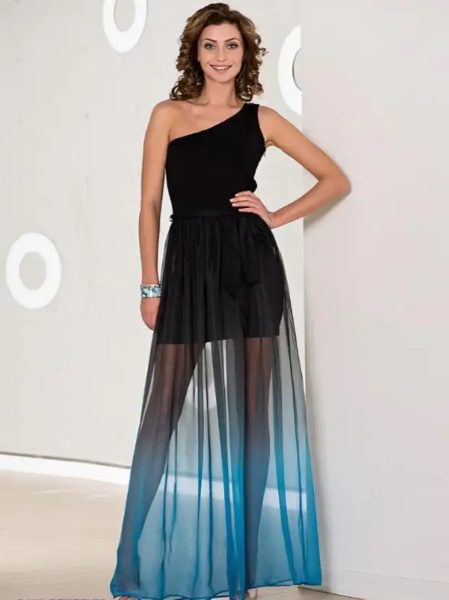
As in the case of a cape skirt, you don’t have to sew the train to the dress permanently; you can sew a neat belt or strap with it and combine it with the dress when necessary.
Lengthening a knitted or denim dress
Such materials as jersey and denim stand apart from all other fabrics. Dresses made from them are distinguished by their characteristics (knitwear is soft, denim is textured). They are ideal for everyday wear, but at the same time, when it is necessary to lengthen products made from this type of fabric, a number of difficulties arise.
The softness of knitwear and the texture of denim do not leave much room for alteration and creativity, so you can lengthen a dress made of these fabrics, if necessary, only by adding flounces or stripes of another material and lace or inserts along the bottom of the dress. Methods such as adding length by sewing in inserts at the waist and in the bodice area will not work in this case.
If necessary, dresses made of denim or knitwear can be lengthened as follows:
- Having selected a suitable fabric, cut out a strip to create a frill. For a denim dress, this could be lace or thick chintz with a printed pattern. For knitted fabrics, you can take fabrics made of artificial leather or just knitwear of the same or, conversely, a contrasting tone.
- The resulting piece is sewn to the hem of the dress in any suitable way - with the seam facing outward or inward (depending on the style of the dress). The edges of the additional strip of fabric are not always overcast - this depends on the dress model and the overall concept of the outfit.
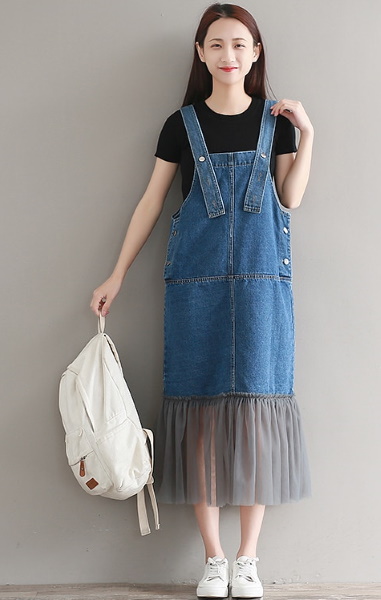
In addition to lace, tulle and denim of a different shade can be used in combination with denim. It also looks beautiful to lengthen a denim dress by adding a lace strip at the bottom of the hem, when a small piece of fabric (5-10 cm) is cut off at the bottom of the dress and the cut part is connected to the main part of the product with a lace insert.
Decorating inserts
To decorate the inserts you can use:
- sequins;
- rhinestones;
- beads;
- beads;
- guipure.

These elements do not directly help to lengthen the dress, but can be useful if there is a need to somehow emphasize the inserts and place the right accents. For example, for going out, you can decorate a dress that is lengthened by inserts in the middle with guipure, and dresses with stripes of fabric or flounces added to the bottom will suit beads or rhinestones, which can also decorate the top of the dress.
Pleating
You can lengthen a dress not only by adding a regular flounce or strip of fabric, but also by using a pleated frill. This design is suitable for straight, simple-cut dresses. The pleated additional part can be made from the same fabric the dress is made of, or you can play on the contrast and choose something different in color and texture.
The pleated element is made like this:
- A piece of fabric is cut out with some extra space to create folds. How many there will be is up to each person individually, as they can be larger or very small.
- Then, using an iron and sewing pins, create folds, bending and fixing each of them.
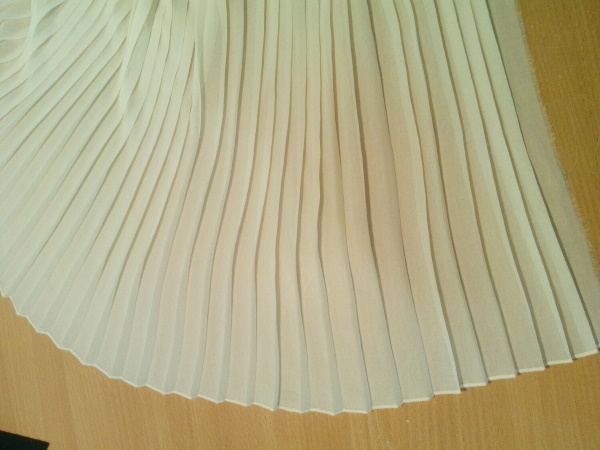
- After this, when all the folds are formed and pinned, the upper part of the edge is stitched on a sewing machine.
- Next, use an overlock to overcast the bottom edge, then fold it over, iron it and hem it.
- The blank is sewn to the dress in the usual way, the seam is also processed with an overlock.
The dress, trimmed along the bottom edge, looks strict and laconic.
Second skirt
The second skirt can be a full-fledged petticoat or be its imitation, when in fact a strip is sewn on the inside of the bottom of the dress, looking like a petticoat. This method is suitable for dress models with a rather lush bottom, non-straight cut.
In the first case, a full-fledged lower skirt is cut out of the selected fabric, which should be several centimeters longer than the upper part. In the waist area, the workpiece, overcast on both sides, is sewn on the inside along the waist line. In the second case, a strip is cut out of the fabric, which is sewn to the bottom of the dress from the inside, so that it looks like part of the lower skirt.
There are many ideas on how to lengthen a dress. All of them allow you to do it beautifully and neatly so that the product does not lose its attractiveness and presentable appearance. The choice of alteration method will depend on the style of the dress, since each model is more suitable for one option of adding length and is completely unsuitable for another.
All the described methods are quite simple and, having minimal sewing skills, you can easily lengthen the dress yourself, without any outside help.
Video on how to lengthen a dress with your own hands
How to lengthen a dress:
